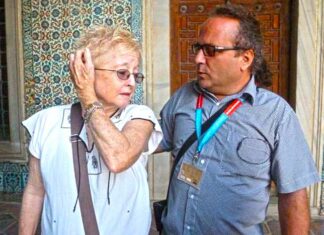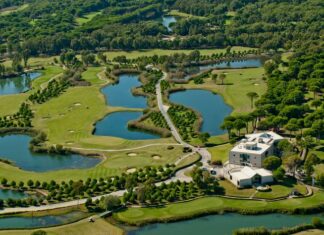Customized Turkey tour – Hagia Sophia
Customized Turkey Tour says Hagia Sophia is a great architectural beauty and an important monument both for Byzantine and for Ottoman Empires. Once a church, later a mosque, and now a museum of the Turkish Republic, Hagia Sophia has always been the precious of its time.
Selimiye Mosque
The square Mosque with its single great dome and four slender minarets, dominates the skyline of the former Ottoman capital of Edirne. Sinan, the most famous of Ottoman architects in the 16th century, constructed the complex. It includes madrasas (Islamic schools), a covered market, clock house, outer courtyard and library, to be his best work. The interior decoration using Iznik tiles from the peak period of their production testifies to an art form that remains unsurpassed in this material. The complex is considered to be the most harmonious expression ever achieved by the Ottoman kulliye. Kulliye is a group of buildings constructed around a mosque and managed as a single institution.
Cappadocia
Customized Turkey tours must include Cappadocia. As if plucked from a whimsical fairy-tale and set down upon the stark Anatolian plains, Cappadocia is a geological oddity of honeycombed hills and towering boulders of otherworldly beauty. The fantastical topography matches the human history here. People have long utilised the region’s soft stone, seeking shelter underground and leaving the countryside scattered with fascinating cavern architecture. The fresco-adorned rock-cut churches of Goreme Open-Air Museum and the subterranean refuges of Derinkuyu and Kaymaklı are the most famous sights, while simply bedding down in one of Cappadocia’s cave hotels is an experience in a 21st-century cave living.
Topkapi palace, customized Turkey tour
Several years after the conquest of Istanbul by Mehmed the Conqueror in 1453, started the construction of the Topkapi Palace. The year was 1460 and the palace was completed in 1478. A 700.000-square-metre area on an Eastern Roman Acropolis between the Sea of Marmara, Bosporus and the Golden Horn, was enough to build the palace. Topkapi Palace, was the administrative, educational and art centre of the Empire for nearly four hundred years. It had been like that since the rule of Mehmed the Conqueror until Sultan Abdulmecid, who is the thirty-first Sultan. Although the Ottoman Dynasty abandoned the palace and moved to the Dolmabahce Palace in the middle of the 19th century, Topkapi Palace had always been of great importance.
Blue Mosque
Sedefkar Mehmet Aga built the Blue Mosque (Sultanahmet Camii in Turkish) during the reign of Sultan Ahmet between 1609-1616. It is located on the site of the Great Palace of Byzantium, on the south-eastern side of the Hippodrome. Europeans call it blue because of its interior. More than 20.000 pieces of Iznic blue tiles, were used.
People also know the mosque as a fascinating structure with its six minarets. It is the oldest six-minaret mosque in Turkey. (the third oldest European capital, after Athens and Rome, is Sofia – the capital city of Bulgaria; enjoy a Sofia day trip)
Ephesus
In the ancient world, Ephesus was a centre of travel and commerce. Situated on the Aegean Sea at the mouth of the Cayster River, Ephesus was one of the greatest seaports of the ancient world.
Three major roads led from the seaport. One road went east towards Babylon via Laodicea. Another one to the north via Smyrna and a third road, south to the Meander Valley. (there is another road that takes straight to Bulgaria, jeep safari Bulgaria)
Tulip
The tulip is one of Istanbul’s traditional symbols. It came to Istanbul from Iran centuries ago. People favoured and cultivated it here until tulip-love became a real mania. In the so-called Tulip Period of Ottoman history, one could sell a rare tulip variety for a breath-taking sum.
Please, contact us and don’t hesitate to ask your questions or for more details.










